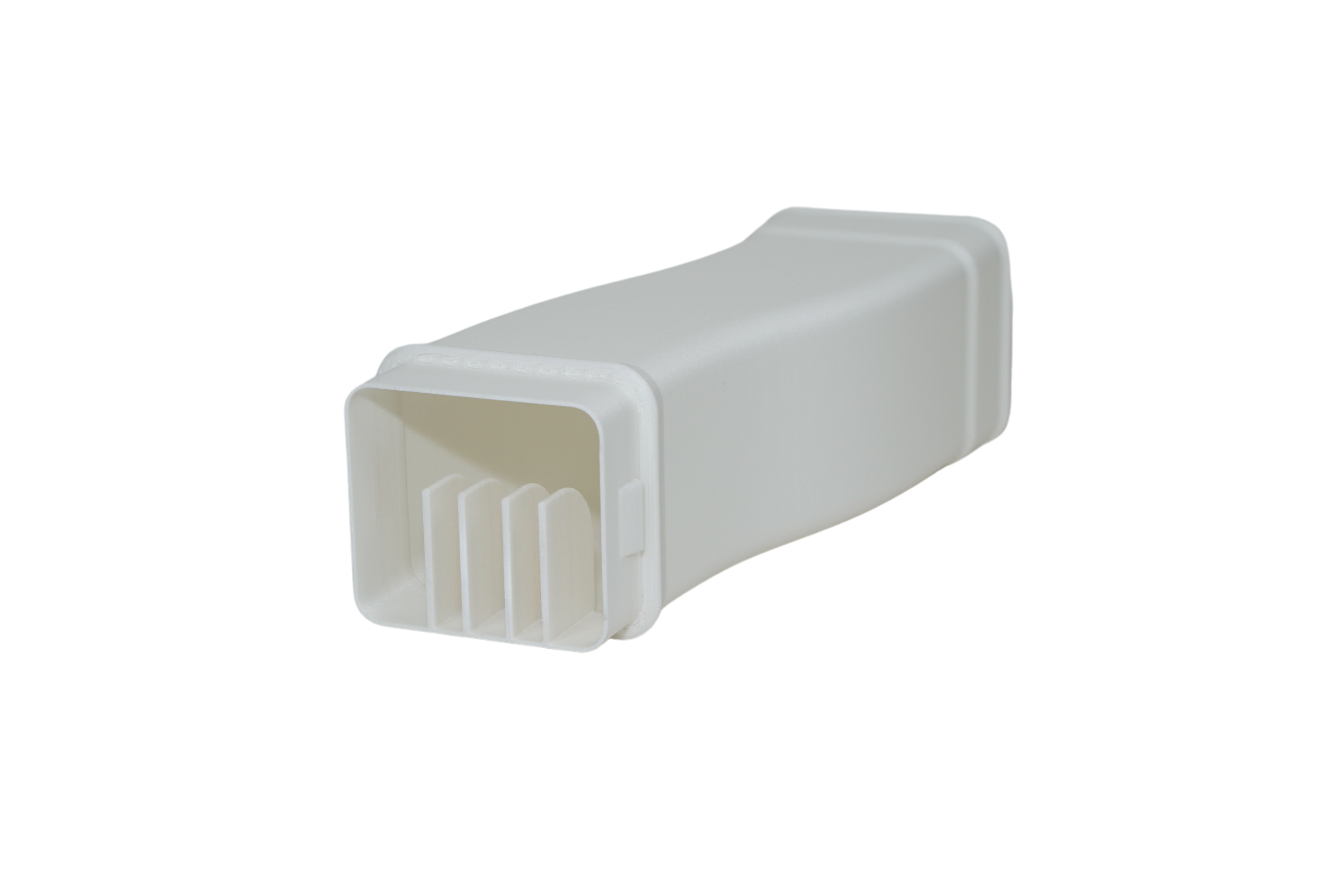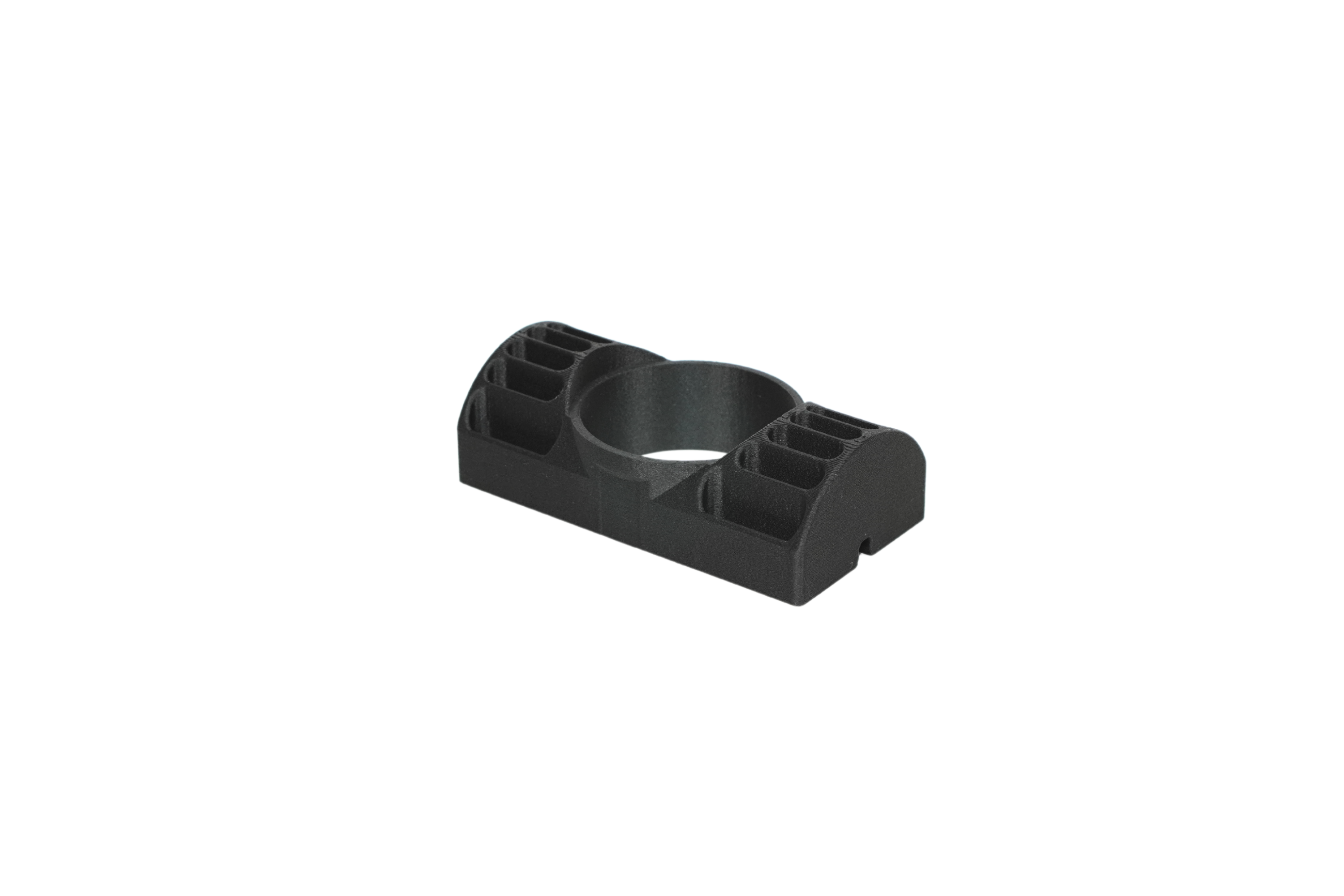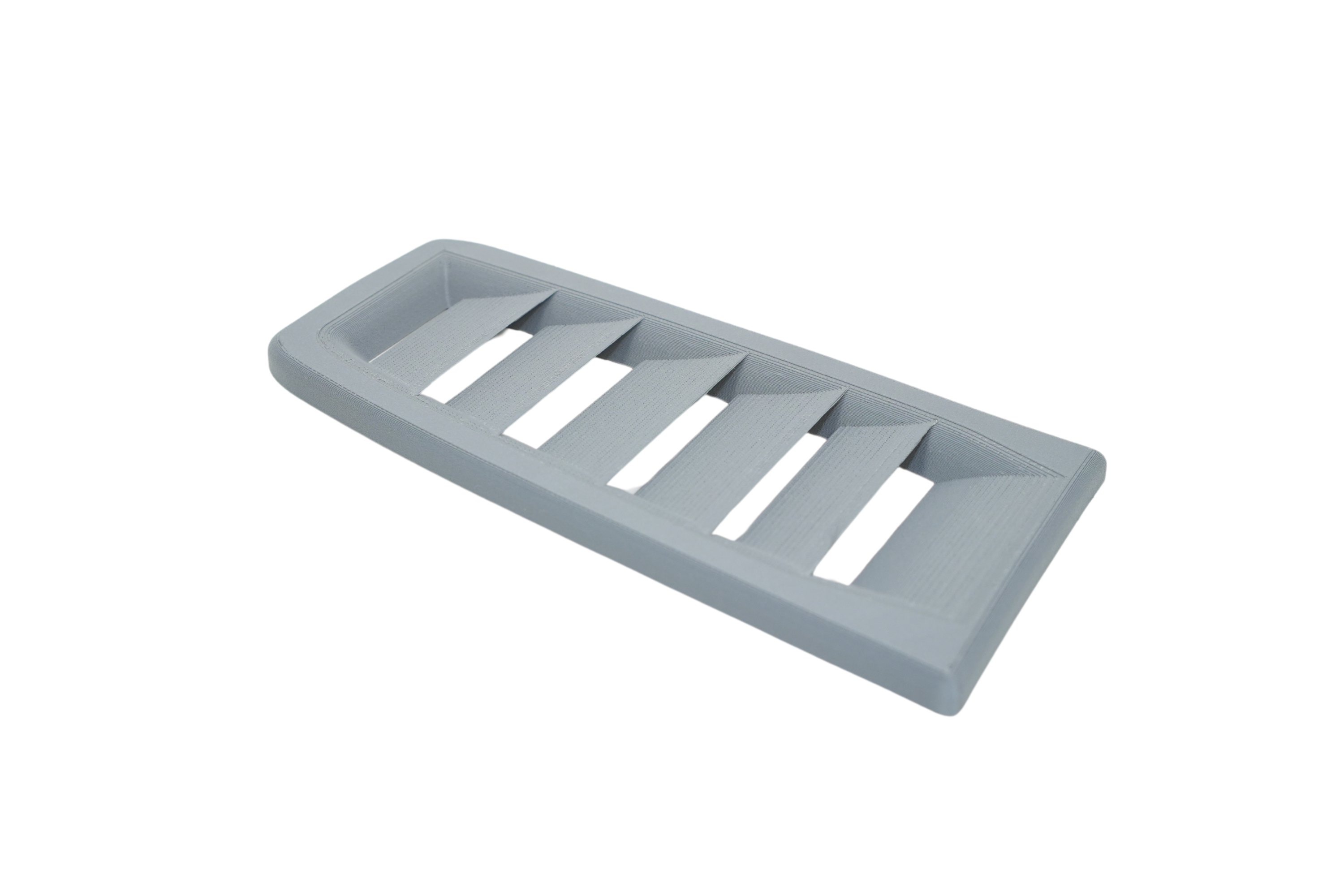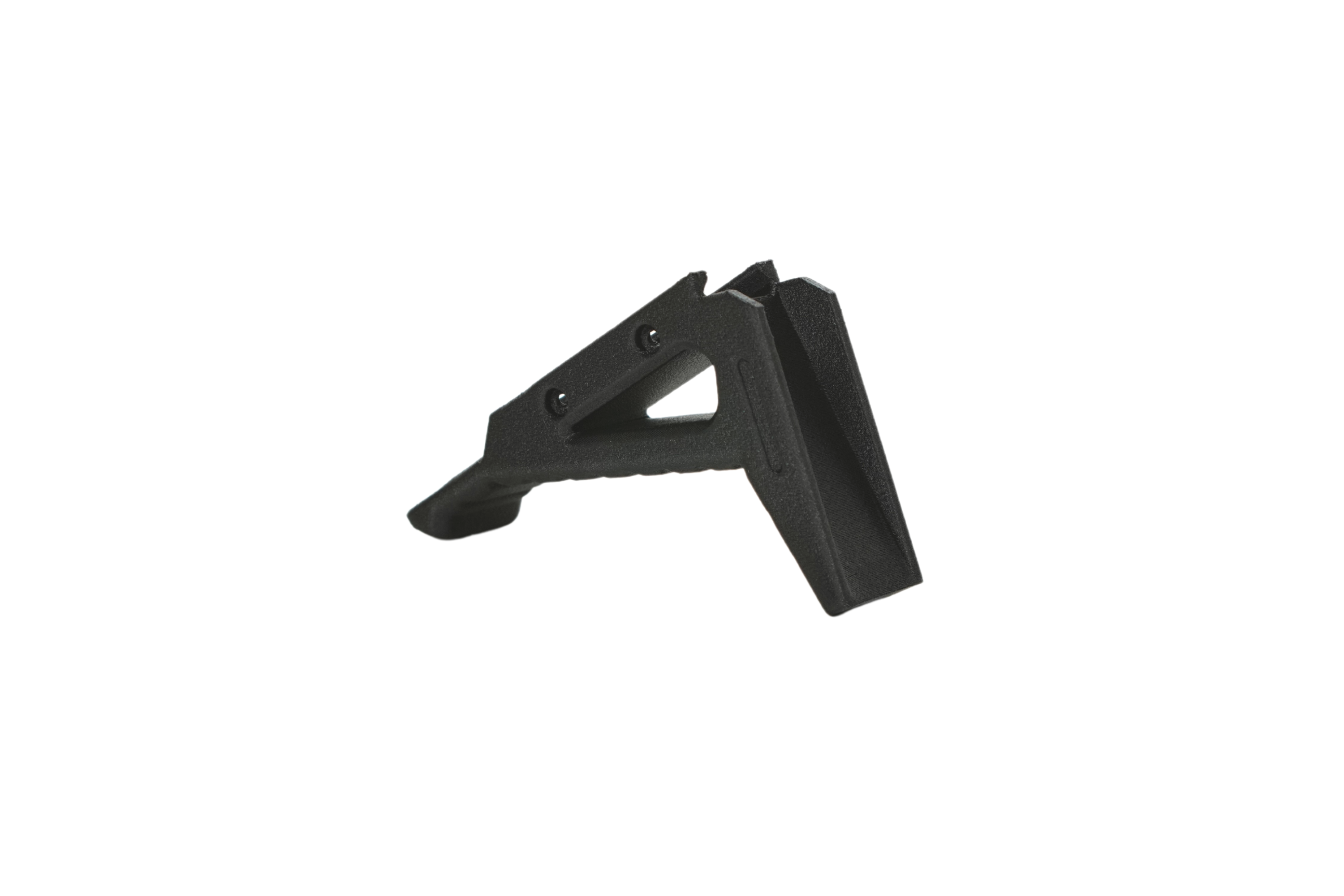PC/PBT + 15GF and PC/PBT + 15CF – filaments made for extreme conditions
:fill(white)/5a6e13dabd97a4669982df2477e3895f)
The demand for technical materials is growing year by year. To meet these expectations, we have developed two new composite materials: PC/PBT + 15CF and PC/PBT + 15GF.
The trend of high-speed CoreXY 3D printers, initiated by Bambu Lab, is entering a new phase. This time, manufacturers are focusing on larger, enclosed machines, some even featuring heated chambers. An enclosed 3D printer not only offers quieter operation, a more rigid structure, and reduced emission of harmful particles into the workspace but also enables the printing of advanced technical materials. In response to the growing demand for engineering-grade filaments, we are introducing new composite materials based on polycarbonate: PC/PBT + 15CF and PC/PBT + 15GF.
What do these abbreviations mean?
PC: Polycarbonate is a thermoplastic polymer known for its low density, exceptional mechanical strength, chemical and temperature resistance, and impact durability. Due to its unique properties, it is widely used across various industries, including construction and architecture. In everyday applications, polycarbonate serves as an excellent glass substitute—it is 50% lighter than glass, easy to bend, cut, and drill, and highly resistant to mechanical damage. It also provides effective thermal insulation and can withstand temperatures ranging from -30°C to 120°C.
In 3D printing, polycarbonate is also known for its high mechanical and thermal resistance, low thermal expansion coefficient, and resistance to oils, greases, and most solvents. Additionally, it is an excellent electrical insulator. The only drawbacks of this material are its lack of resistance to certain acids and alcohols, as well as its low UV resistance.
PBT: Polybutylene Terephthalate is a semi-crystalline thermoplastic polyester known for its high strength, hardness, abrasion resistance, and low moisture absorption. Its dimensional stability and creep resistance make it ideal for demanding mechanical applications. Thanks to its resistance to chlorine-based cleaning agents and low wear, PBT is widely used in the food industry.
In 3D printing, the combination of PBT and PC results in a filament with enhanced dimensional stability, offering high mechanical strength at both low and high temperatures. The addition of PBT increases flexibility while also improving polycarbonate’s resistance to fuels, impacts, heat, and UV radiation.
GF: Glass Fiber is a material made of thin strands of glass, which are combined into threads, mats, or fabrics. Due to its exceptional properties, it is widely used across various industries. It offers high mechanical strength, surpassing steel of the same diameter while being significantly lighter. It remains stable under temperature changes, thanks to its low coefficient of linear expansion, and acts as an effective thermal insulator due to its low thermal conductivity. As a mineral material, it is non-flammable, does not sustain flames, and does not release toxic gases when exposed to heat. It is highly resistant to moisture and most chemicals, making it durable in harsh environments and corrosion resistant. Additionally, it possesses excellent electrical insulation properties, with high dielectric strength and a low dielectric constant, making it an outstanding insulator even in thin layers. In 3D printing, glass fiber is added to filaments to enhance their mechanical properties. The addition of glass fiber makes prints stiffer, stronger, more heat-resistant, and less prone to warping.

PC/PBT + 15GF Natural – Headlight Air Intake for Cars.
CF: Carbon Fiber consists of thin filaments, approximately 5-10 micrometers in diameter, composed primarily of carbon atoms. These fibers are combined into strands, which can then be woven into fabrics or used as reinforcement in polymer composites. It is known for its exceptional tensile strength, making it an ideal material for applications requiring high mechanical durability. It is significantly lighter than traditional structural materials such as steel or aluminum, allowing for weight reduction without compromising strength. Carbon fiber is resistant to many chemicals and does not corrode, ensuring long-lasting durability even in harsh environmental conditions. It effectively dampens vibrations, making it beneficial for applications that require reduced oscillations. Additionally, it exhibits good electrical and thermal conductivity. Thanks to its outstanding properties, carbon fiber is widely used in industries such as aerospace, automotive, and construction. In 3D printing, CF is a popular additive in various filaments, ranging from PLA to PC, enhancing their strength, rigidity, and heat resistance.
PC-PBT
To enhance the properties of each of the polymers mentioned above, we have developed a filament based on a blend of polycarbonate (PC) and polybutylene terephthalate (PBT). Its market introduction has received highly positive feedback, thanks to the way this combination merges the strengths of both materials while also being optimized for improved UV, temperature, and impact resistance. As a result, prints made from this material offer:
- exceptional mechanical strength – high durability, flexibility, elasticity, impact resistance across a wide temperature range, and excellent creep resistance,
- outstanding chemical resistance – particularly against fuels, oils, greases, alcohols, and other substances,
- high thermal stability,
- dielectric properties,
- UV and moisture resistance,
- a high-gloss finish.
All these features make this material highly versatile for machine and equipment components, suitable for both indoor and outdoor applications.
New solutions
Based on the outstanding PC-PBT material composition described above and in response to market demands, we introduce two new technical filaments enhanced with fiber reinforcements:
PC/PBT + 15 CF
This filament contains 15% technical carbon fibers, which enhance the already impressive properties of the polymer blend with the unique advantages of carbon fiber. As a result, the material becomes stiffer, less prone to warping during printing, and offers greater thermal stability. The fiber reinforcement also gives both the filament and the printed parts a distinct surface texture, adding an extra aesthetic appeal. The filament is available in black.
A distinctive feature introduced by carbon fibers in this material is its residual electrical conductivity. However, this characteristic does not meet the strict requirements for ESD functionality.

PC/PBT + 15CF – Center vent for cars.
PC/PBT + 15 GF
This filament contains 15% technical glass fibers, which enhance the advantages of the polymer blend with the unique properties of glass fiber. As a result, the material becomes stiffer, less prone to warping during printing, and offers greater thermal stability. The fiber reinforcement also gives both the filament and the printed parts a distinct surface texture, adding an aesthetic effect and making layer lines less visible. Additionally, the material retains excellent dielectric properties. The filament is available in the following colors: natural, black, and gray.

PC/PBT + 15GF Gray – Hood vent for cars.
Which PC-PBT composite should you choose: glass fiber or carbon fiber?
If you need a rigid, durable print that is resistant to high temperatures, impacts, UV radiation, as well as acids, oils, fuels, and greases, either of the described materials will be a suitable choice.
Since both filaments have similar properties, the main difference comes from the type of fibers used, affecting their electrical properties and moisture absorption. Carbon fibers can absorb some moisture, whereas glass fibers do not. For applications both indoors and outdoors, especially in sub-zero temperatures, or if you need a filament available in black or other colors, PC/PBT + 15GF is the better choice. Likewise, if you require an electrically insulating material for direct contact with electrical voltage, PC/PBT + 15GF is the recommended option.
The PC/PBT + 15GF filament can be used for printing:
- machine and equipment components,
- interior fittings in automobiles,
- housings for electrical and electronic devices,
- housings for drones,
- parts for remote-controlled RC vehicle models,
- accessories for firearms, airsoft, and paintball,
- indoor and outdoor applications in harsh weather conditions.

PC/PBT + 15GF Black – Picatinny Foregrip for rifle.
The PC/PBT + 15CF filament is a slightly lighter material with – anti-static properties and can be used for printing:
- components used in aviation,
- parts and structural elements for drones and RC models,
- machine and equipment components,
- elements requiring minimal anti-static properties,
- indoor and outdoor applications in moderate weather conditions.
How to print?
| Printing parameters | ||||
| Nozzle temperature [°C] | 250-280 | |||
|---|---|---|---|---|
| Bed temperature [°C] | 90-110 | |||
| Cooling fan speed [%] | 0-20 | |||
| Enclosed chamber | recommended | |||
| Heated chamber temperature [°C] | 50-80 | |||
| Nozzle type | steel | |||
| Drying conditions [°C /h] | 80/6 | |||
Regardless of which composite is chosen, the filament settings remain the same. Due to the presence of glass or carbon fibers, printing requires higher temperatures and the use of a steel nozzle. If adhesion issues occur, increase the temperature to its maximum and use an adhesion promoter. For enhanced print strength, print in a closed, heated chamber and reduce cooling to a minimum. Before each print, dry the filament in a dryer for 6 hours at 80°C to ensure optimal performance.
The material is compatible with Bambu Lab printers that have a closed chamber (P1S, X1C, and X1E). In the filament profiles, select Generic PC and ensure the chamber remains closed during printing. Due to the presence of glass or carbon fibers, this material is not compatible with AMS.
ROSA PLAST SP. z o.o.
ul. Hipolitowska 102B
05-074 Hipolitów, POLAND
Email
eshop@rosa3d.pl
Our team is at your disposal on working days during the hours:
od 7:00 do 15:00
Follow us






